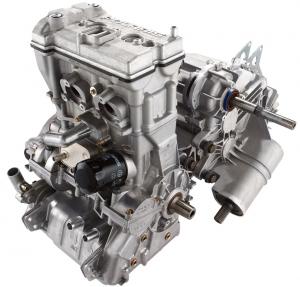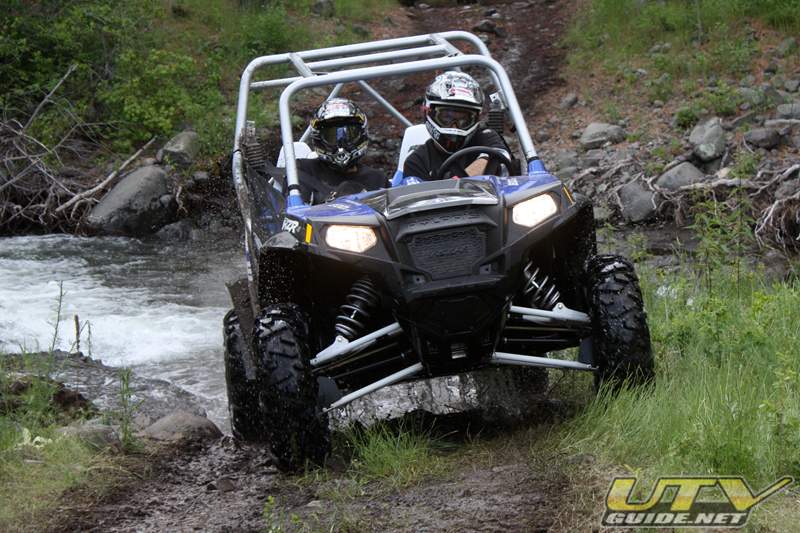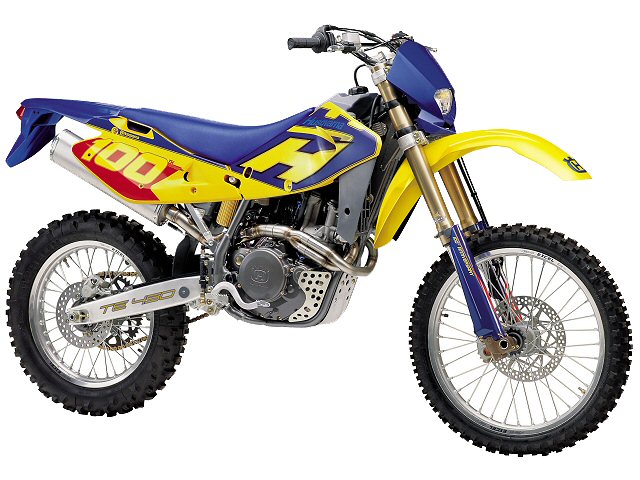New sports tourer from Triumph offers performance and practicality • 130bhp version of Triumph’s iconic 1050cc triple • Up to 117 litres of hard luggage capacity with accessory top box • Anti-lock braking system comes as standard • Updated Sprint ST incorporates sharper new look 2011 Triumph Sprint GT: for all the roads ahead Five years after the introduction of the popular 1050cc Sprint ST sports tourer comes a new model with greater practicality and more emphasis on the ‘touring’ aspect of ‘sports touring’: the Triumph Sprint GT. That is not to say the Sprint GT has lost the sporting edge that made the Sprint ST one of the most popular and enduring bikes in the Triumph range. As you would expect from a British machine wearing the famous Grand Tourer tag, the Sprint GT delivers outstanding real world performance in a practical and stylish package. In an increasingly segmented motorcycle market, the Sprint GT offers a unique proposition for everyday motorcyclists: performance, price and practicality. Performance is taken care of by an updated version of Triumph’s legendary 1050cc triple. First introduced in the 2005 Sprint ST, the latest incarnation of this great engine has been updated to deliver increased power, torque and usability. With 130bhp on hand, the Sprint GT offers excellent real world performance, with development focused on power delivery in the mid-range rather than chasing peak power. Practicality is the GT’s byword with new 31 litre panniers, ABS brakes as standard, under seat storage, built in rack with well appointed grab rail, 200 mile fuel range and an optional top box capable of swallowing two full sized helmets and offering a 12 volt power supply to allow ‘on the go’ charging of electrical items such as laptops and mobile phones. And price? Sprint GT: built for real world riders Triumph’s design team set out developing a bike that would ‘improve the Sprint ST practicality without transcending into pure tourer territory’ and set about developing the bike that they themselves would like to ride across Europe, while listening to feedback from its existing customers – particularly riders of the Sprint ST – to ensure that the Sprint GT hits the mark. The result is a bike that can take you all the way to the Scottish Highlands in comfort – and allow you to have fun when you get there. Comparing the Sprint GT to the more sporting ST, the new bike is all new from behind the fuel tank, while up front it incorporates a number of updates to create a new bike with a different attitude and feeling for both rider and pillion. Starting from the very front, the GT features newly-styled and better performing reflector headlights, offering improved distribution of light over the previous ST projector type units. A new internal mounting system for the mirrors has been introduced to give a clearer view at speed, while the cockpit itself has been restyled to give a sharper and more contemporary look, while retaining the distinctive three-light Sprint design. In the cockpit, riders will find a comprehensive three dial instrument panel with large traditional analogue speedometer and tachometer, while the third dial hosts the readout for the on board computer, where the rider can scroll through fuel consumption, range-to-empty, journey time, average speed and clock functions. Further major differences can be found at the rear of the bike. The ST under seat exhaust has been replaced by a traditional side mounted system, with the new triangular section silencer mounted under the right side pannier, which not only releases more horsepower, but also frees up enough under seat storage space to accommodate Triumph’s accessory U-lock. The new seat sits the pillion lower than on the Sprint ST, and their comfort is further aided by lower footpegs, while the built in luggage rack comes with generous grab handles as standard. Sprint GT owners opting for the optional powered top box will further benefit from the ergonomic styling for additional comfort and support on long rides. A new rear wheel is 1kg lighter than the visually identical item on the outgoing ST and both front and rear wheels are shod with Bridgestone dual compound BT021 tyre, which offer better handling and durability than the BT020 specified on the previous Sprint ST. The GT’s longer single-sided swingarm creates a 1565mm wheelbase (compared to 1457mm of the Sprint ST) to maintain excellent stability even when fully laden, while the suspension on the GT has also been updated. Front forks are outwardly similar to the ST but have revised damping for greater control under braking, while the all-new rear shock also embraces the GT’s practicality drive, featuring a remote pre-load adjuster wheel which is easily accessible and can be changed by hand to accommodate solo and two-up riding. Brakes have been revised with lighter discs, more rigidly mounted for greater durability, and a new brake pad formulation providing greater feel and approximately 10% increase in braking performance. Loaded with luggage A key development area for the Sprint GT has been endowing it with world class luggage solutions. Where the Sprint ST sported dual 22 litre panniers ideal for weekends away, the Sprint GT comes equipped with full touring specification 31 litre panniers as standard, with an equally well-specified top box available as an optional extra to take the total hard luggage capacity to a cavernous 117 litres. Each pannier has a 31 litre capacity shaped for maximum practicality and is big enough to swallow a full-face XXL helmet. The panniers are certified to carry 15kg distributed equally between both sides. They are operated with the bike’s ignition key and are fully waterproof. Panniers are colour-coded to the bike and feature a new mounting system that eliminates the need for external rails, giving a cleaner look when the panniers are removed. The pannier fits on two discreet mounting points through the rear bodywork, while the Sprint GT employs Triumph’s unique pannier mounting system to maintain high speed stability when fully loaded. This system links the two panniers together but allows them a degree of movement relative to the bike, canceling the effect on the chassis of loaded panniers and ensuring the Sprint GT tracks straight and true at autobahn speeds. If that’s not enough, Triumph’s accessories division is offering a gargantuan 55 litre powered top box designed especially for the Sprint GT. Capable of carrying two full sized helmets, the top box has the benefit of a built in 12 volt power socket that allows the recharging of electrical items such as mobile phones and notebook computers while on the go. With built in electrical contact points, the top box requires no electrical wiring by the rider for true ‘plug and play’ practicality. The top box is also colour coded and operated by the ignition key, and is available with an optional inner liner. The ergonomic design provides a comfortable backrest for the pillion, with an optional comfort pad available for passengers who prefer additional support. Like all Triumph accessories, the top box has been fully tested to Triumph’s stringent OE standards, giving customers total peace of mind that fitting it will not affect the safe operation of the motorcycle. The full range of accessories includes a host of other options designed to further increase the practicality of the Sprint GT and allow riders to personalize the motorcycle to their specific needs. These include heated handlebar grips, a taller aero screen, optional gel comfort seat and high quality magnetic tank bags which can increase the Sprint GT’s luggage capacity by a further 30 litres. Technical torque Renowned for its sporting character, Triumph’s 1050cc triple has been updated for the Sprint GT, offering even better drivability than in previous incarnations. A new exhaust system and revised ECU lifts peak power by 5bhp to 130bhp (@9,200rpm) over the Sprint ST. Most significantly, the engine has been tuned for even stronger mid range, with peak torque increased by 5Nm to 108Nm (80 Ft.lb) and delivered 1,200rpm lower in the rev range for even easier overtaking. Because the Sprint GT has been designed to cover long distances and take riders to far flung places, fuel range is just as important as rider comfort. The 20 litre fuel tank ensures the Sprint GT can comfortably cover 200 miles between fuel stops. Triumph’s latest generation engine management system not only helps deliver more power and torque, it also gives a small improvement to fuel consumption and ensures that the Sprint GT delivers the smoothest throttle response of any 1050 yet. Sixth gear on the Sprint GT is 7% taller than on the ST, delivering more relaxed motorway riding and improved touring economy. Sprint GT chassis: intuitive comfort The main twin-spar aluminum beam frame is carried over from the Sprint ST, while the 43mm front forks have received updated internals for improved control and damping. The rest of the chassis is new. Rear wheel mass has been reduced by 1kg, while Bridgestone BT021 dual compound tyres have been chosen for their excellent blend of performance and durability. The new exhaust system lowers the center of gravity when compared to the ST under seat system, while the swingarm is 79.5mm longer to maintain stability when carrying heavy loads. Visually the GT is designed to update the ST style rather than create an all-new look. The new rear subframe creates a more practical rear end and the only body panels carried over from the sporting ST are the fuel tank and fairing lowers. The Sprint GT also features a newly designed center stand for improved ease of operation. Up front, twin 320mm floating discs are grabbed by powerful four-piston calipers with a single 255mm disc at the rear. Triumph’s unobtrusive anti lock braking system, an option on the Tiger 1050 and outgoing Sprint ST, has been updated and is standard fitment on the Sprint GT in line with customer expectations and Triumph’s ongoing commitment to improving rider safety. The result is a motorcycle with a different feel to the Sprint ST, biased more towards the ‘touring’ side of sports touring than the Sprint ST ‘sports’ – a composed machine with precise and intuitive handling to keep up with sports bikes on demanding roads, but equally delivering the comfort required for a long two-up session in the saddle. The 2011 Triumph Sprint GT comes in two colour options: Aluminium Silver and Pacific Blue.
Five years after Triumph introduced the popular 1050cc Sprint ST sports touring bike, the British marque has introduced a new model with greater practicality and more emphasis on the ‘touring’ aspect of ‘sports touring’: the Triumph Sprint GT.
As you would expect from a British machine wearing the famous Grand Tourer tag, the Sprint GT delivers outstanding real world performance in a practical and stylish package. But this should not construed that the Sprint GT has lost the sporting edge that made the Sprint ST one of the most popular and enduring bikes in the Triumph range.
Of course, practicality is the GT’s hallmark. The bike also features new 31 liter panniers, standard ABS brakes, a 200-mile fuel range, an optional top box that is capable of accommodating two full-sized helmets, and a 12 volt power supply that allows ‘on the go’ charging of electrical items such as laptops and mobile phones.
The result is a motorcycle with a different feel to the Sprint ST, biased more towards the ‘touring’ side of sports touring than the Sprint ST ‘sports’ – a composed machine with precise and intuitive handling to keep up with sports bikes on demanding roads, but equally delivering the comfort required for a long two-up ride cross-country.
Priced at $13,199, the Sprint GT will be available in US dealerships this fall as early release 2011 models.
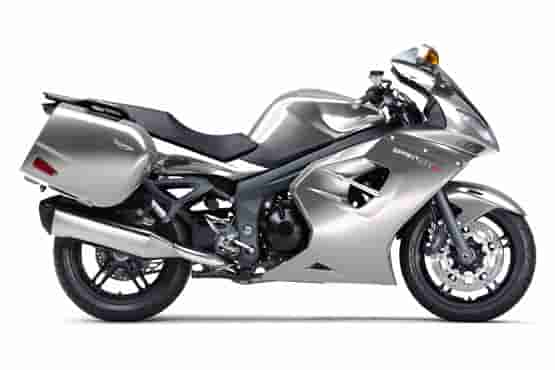 2011 Triumph Sprint GT
2011 Triumph Sprint GT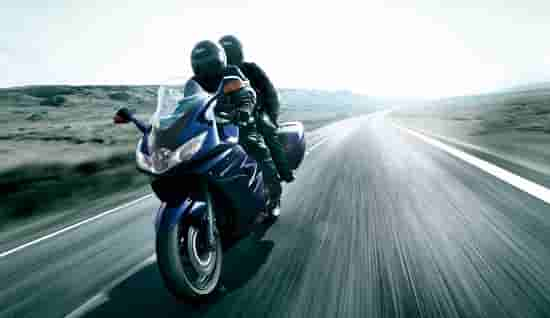 2011 Triumph Sprint GT
2011 Triumph Sprint GT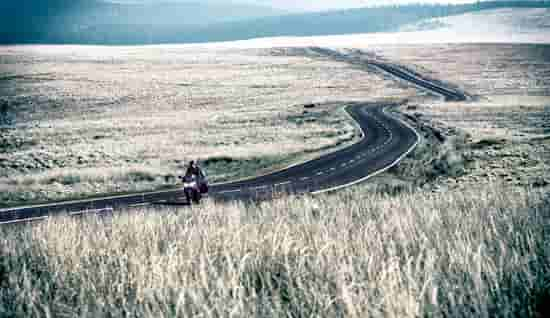 2011 Triumph Sprint GT
2011 Triumph Sprint GT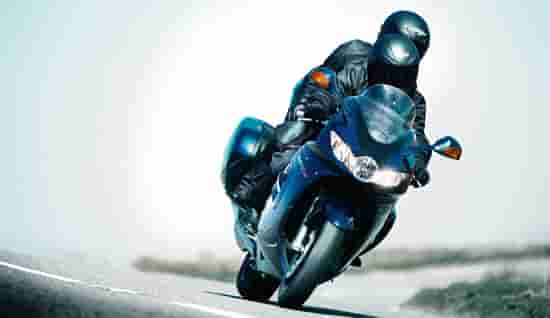 2011 Triumph Sprint GT
2011 Triumph Sprint GT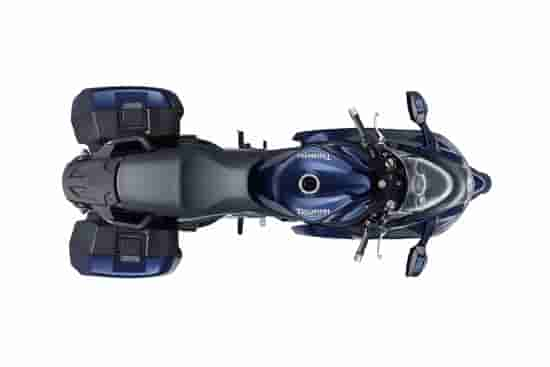 2011 Triumph Sprint GT
2011 Triumph Sprint GT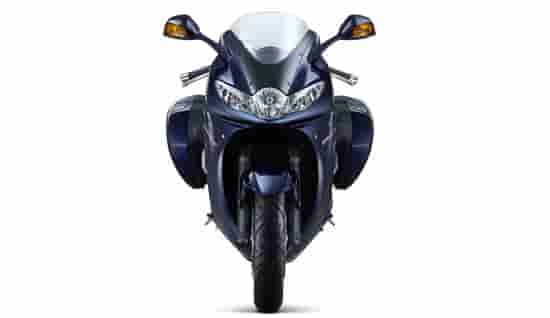 2011 Triumph Sprint GT
2011 Triumph Sprint GT
2011 Triumph Sprint GT
Five years after Triumph introduced the popular 1050cc Sprint ST sports touring bike, the British marque has introduced a new model with greater practicality and more emphasis on the ‘touring’ aspect of ‘sports touring’: the Triumph Sprint GT.
As you would expect from a British machine wearing the famous Grand Tourer tag, the Sprint GT delivers outstanding real world performance in a practical and stylish package. But this should not construed that the Sprint GT has lost the sporting edge that made the Sprint ST one of the most popular and enduring bikes in the Triumph range.
That is not to say the Sprint GT has lost the sporting edge that made the Sprint ST one of the most popular and enduring bikes in the Triumph range. As you would expect from a British machine wearing the famous Grand Tourer tag, the Sprint GT delivers outstanding real world performance in a practical and stylish package.
Performance is taken care of by an updated version of Triumph’s legendary 1050cc triple. First introduced in the 2005 Sprint ST, the latest incarnation of this great engine has been updated to deliver increased power, torque and usability. With 130bhp on hand, the Sprint GT offers excellent real world performance, with development focused on power delivery in the mid-range rather than chasing peak power.
Of course, practicality is the GT’s hallmark. The bike also features new 31 liter panniers, standard ABS brakes, a 200-mile fuel range, an optional top box that is capable of accommodating two full-sized helmets, and a 12 volt power supply that allows ‘on the go’ charging of electrical items such as laptops and mobile phones.
The result is a motorcycle with a different feel to the Sprint ST, biased more towards the ‘touring’ side of sports touring than the Sprint ST’s ‘sports’ – a composed machine with precise and intuitive handling to keep up with sports bikes on demanding roads, but equally delivering the comfort required for a long two-up ride cross-country.
At £9,499 on the road, the Sprint GT offers real-world performance at a price other sports tourers can’t come close to.
Priced at $14,399, the Sprint GT will be available in Canadian dealerships this fall as an early release 2011 model.
Priced at $13,199, the Sprint GT will be available in US dealerships this fall as early release 2011 models.
Features and Benefits
Overview
Five years after the introduction of the popular 1050cc Sprint ST sports tourer comes a new model with greater practicality and even more emphasis on the touring aspect of sports touring – built for all the roads ahead…
Hard Bags
The Sprint GT comes equipped with full touring specification 31 liter hard bags as standard
Top Box
Capable of carrying two full sized helmets, The GT’s top box has the benefit of a built in 12 volt power socket that allows the recharging of electrical items such as mobile phones and notebook computers
Brakes
Revised brakes with lighter discs, more rigidly mounted for greater durability, and a new brake pad formulation providing greater feel and approximately 10% increase in braking performance.
Chassis
The main twin-spar aluminum beam frame is carried over from the Sprint ST, while the 43mm front forks have received updated internals for improved control and damping. The rest of the chassis is brand new, specifically designed for the GT.
Rear Suspension
All-new rear shock also embraces the GT’s practicality drive, featuring a remote pre-load adjuster wheel which is easily accessible and can be changed by hand to accommodate solo and two-up riding.
Headlights
The GT features newly-styled and better performing reflector headlights, offering improved distribution of light over the previous ST’s projector type units.
2011 Triumph Sprint GT - USA Specifications
MSRP: $13,199 USD
Engine Type
Liquid-cooled, 12 valve, DOHC, in-line 3-cylinder
Capacity
1050cc
Bore/Stroke
79 x 71.4 mm
Compression Ratio
12.0:1
Fuel System
Multipoint sequential electronic fuel injection with SAI
Transmission
Final Drive
X ring chain
Clutch
Wet, multi-plate
Gearbox
6-speed
Cycle Parts
Frame
Aluminum beam perimeter
Swingarm
Single-sided, aluminum alloy with eccentric chain adjuster
Front Wheel
Cast aluminum alloy 5 -spoke, 17 x 3.5in
Rear Wheel
Cast aluminum alloy 5 - spoke, 17 x 5.5in
Front Wheel
120/70 ZR 17
Rear Tyre
180/55 ZR 17
Front Suspension
Showa 43mm cartridge forks with dual rate springs and adjustable preload, 127mm travel
Rear Suspension
Showa monoshock with adjustable preload and rebound damping, 152mm rear wheel travel
Front Brakes
"Twin 320mm floating discs, Nissin 4-piston calipers, ABS standard
Rear Brakes
Single 255mm disc, Nissin 2-piston sliding caliper, ABS standard
Dimensions
Length
88.6 in
Width (Handlebars)
29.9 in (including handlebars)
Height
47.6 in (without mirrors)
Seat Height
32.1 in
Wheelbase
60.5 in
Rake/Trail
23.5 degree / 84 mm
Wet Weight
590 lbs
Fuel Tank Capacity
8.2 US gals
Performance (measured at crankshaft to 95/1/EC)
Maximum Power EC
128bhp @ 9,200 rpm
Maximum Torque EC
80 ft.lbs @ 6,300 rpm
Colours
Pacific Blue, Aluminum Silver
Price
$13,199
2011 Triumph Sprint GT - Canada Specifications
MSRP: $14,399 CDN
Engine
Type
Liquid-cooled, 12 valve, DOHC, in-line 3-cylinder
Capacity
1050cc
Bore/Stroke
79 x 71.4mm
Compression Ratio
12.0:1
Fuel System
Multipoint sequential electronic fuel injection with SAI
Transmission
Final Drive
X ring chain
Clutch
Wet, multi-plate
Gearbox
6-speed
Cycle Parts
Frame
Aluminum beam perimeter
Swingarm
Single-sided, aluminum alloy with eccentric chain adjuster
Front Wheel
Cast aluminum alloy 5-spoke 17 x 3.5in
Rear Wheel
Cast aluminum alloy 5-spoke 17 x 5.5in
Front Tyre
120/70 ZR 17
Rear Tyre
180/55 ZR 17
Front Suspension
Showa 43mm cartridge forks with dual rate springs and adjustable preload, 127mm travel
Rear Suspension
Showa monoshock with adjustable preload and rebound damping, 152mm rear wheel travel
Front Brakes
Twin 320mm floating discs, Nissin 4-piston calipers, ABS
Rear Brakes
Single 255mm disc, Nissin 2-piston sliding caliper, ABS
Dimensions
Length
2260mm / 88.9 in
Width (Handlebars)
760mm / 29.9 in (include handlebars)
Height
1210mm / 47.6 in (without mirros)
Seat Height
815mm / 32.1 in
Wheelbase
1537mm / 60.5 in
Rake/Trail
23.5°/84mm
Wet Weight (homologated)
268kg / 590lbs
Fuel Tank Capacity
20 litres / 8.2 US Gallons
Performance (measured at crankshaft to 95/1/EC)
Maximum Power EC
128 bhp @ 9,200 rpm
Maximum Torque EC
80 ft.lbs @ 6,300
Colours
Pacific Blue, Aluminum Silver
Price
$14,399
2011 Triumph Sprint GT - UK Specifications
MSRP £9,499 OTR
Engine
Type
Liquid-cooled, 12 valve, DOHC, in-line 3-cylinder
Capacity
1050cc
Bore/Stroke
79 x 71.4mm
Compression Ratio
12.0:1
Fuel System
Multipoint sequential electronic fuel injection with SAI
Transmission
Final Drive
X ring chain
Clutch
Wet, multi-plate
Gearbox
6-speed
Cycle Parts
Frame
Aluminium beam perimeter
Swingarm
Single-sided, aluminium alloy with eccentric chain adjuster
Front Wheel
Cast aluminium alloy 5-spoke 17 x 3.5in
Rear Wheel
Cast aluminium alloy 5-spoke 17 x 5.5in
Front Tyre
120/70 ZR 17
Rear Tyre
180/55 ZR 17
Front Suspension
Showa 43mm cartridge forks with dual rate springs and adjustable preload, 127mm travel
Rear Suspension
Showa monoshock with adjustable preload and rebound damping, 152mm rear wheel travel
Front Brakes
Twin 320mm floating discs, Nissin 4-piston calipers, ABS
Rear Brakes
Single 255mm disc, Nissin 2-piston sliding caliper, ABS
Dimensions
Length
2260mm
Width (Handlebars)
760mm
Height
1210mm
Seat Height
815mm
Wheelbase
1537mm
Rake/Trail
23.5°/84mm
Wet Weight (homologated)
268kg
Fuel Tank Capacity
20 litres
Performance (measured at crankshaft to 95/1/EC)
Maximum Power EC
130PS
Maximum Torque EC
108Nm
Colours
Pacific Blue, Aluminium Silver
New Sport Touring Bike
Five years after Triumph introduced the popular 1050cc Sprint ST sports touring bike, the British marque has introduced a new model with greater practicality and more emphasis on the ‘touring' aspect of ‘sports touring': the Triumph Sprint GT.
As you would expect from a British machine wearing the famous Grand Tourer tag, the Sprint GT delivers outstanding real world performance in a practical and stylish package.
But this should not be construed that the Sprint GT has lost the sporting edge that made the Sprint ST one of the most popular and enduring bikes in the Triumph range.
"The motorcycle market continues to become more refined, which calls for manufacturers to evolve our product lines to provide what customers are demanding," said Jim Callahan, North American Marketing Manager for Triumph Motorcycles.
"The Sprint GT blends all of the great performance and style of the Sprint ST with some additional comfort and storage space that sport touring riders are looking for."
The GT features a newly-styled and better performing front fairing which has been restyled to give a sharper and more contemporary look while retaining the distinctive three-light Sprint design.
In the cockpit, riders will find a comprehensive three dial instrument panel with a large, traditional analogue speedometer and tachometer while the third dial hosts the readout for the on board computer where the rider can scroll through fuel consumption, range-to-empty, journey time, average speed and clock functions.
Performance is handled by an updated version of Triumph's legendary 1050cc triple. First introduced in the 2005 Sprint ST, the latest incarnation of this great engine has been updated to deliver increased power, torque and usability.
With 130bhp on hand, the Sprint GT offers excellent real world performance, with development focused on power delivery in the mid-range rather than chasing peak power.
Of course, practicality is the GT's hallmark.
The bike also features new 31 liter saddlebags, standard ABS brakes, a 200-mile fuel range, an optional top box that is capable of accommodating two full-sized helmets, and a 12 volt power supply that allows ‘on the go' charging of electrical items such as laptops and mobile phones.
The result is a motorcycle with a different feel to the Sprint ST, biased more towards the ‘touring' side of sports touring than the Sprint ST's ‘sports' - a composed machine with precise and intuitive handling to keep up with sports bikes on demanding roads, but equally delivering the comfort required for a long two-up ride cross-country.

